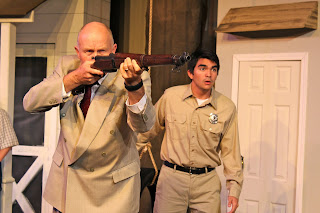The human mind is a complex thing, filled with dreams, memories and intuitions. Science tells us why our brains act this way but does little in helping us to visualize the things we see. That is something only the individual can do. Memoriae is photography major Elisabeth Mikottis’ senior thesis depicting interpretations of her own memories.
Her entire exhibit is based on the concept that space—actual locations—are where memories find their roots and serve as a container for those visuals while at the same time acting as a means to bring those memories back to life. Then and now meet in a single photograph and with the help of Photoshop and skillful lighting technique, Mikottis invites viewers into her mind.
A mix of photography and graphic design, Mikottis’ collection is an interesting and colorful display of her personal recollections. She uses the concept of layering—taking two photos and merging them together—to create an illusion of past and present. Although it is difficult to see the purpose of the photos without studying the context first, each visual stands alone as an interesting piece of work. The lines and shadows of one image intersect with the lighting and colors of the second, so that although both images were shot from the exact same angle, they appear to be entirely different.
One piece in particular illustrated the desired effect perfectly. Titled “free cable” (2011), the original shot was taken three years ago in 2007, yet the lighting and colors were tampered in the more recent photo to rein focus on an open door. Although there is no explanation or description of the specific memory, one gets the distinct feeling that they are looking into a room with a story to it; a memory.
What is so jarring about this photo and the rest of the collection is how the first image in the photo is more realistic—clear, defined lines and traditional colors—while the second image is comprised of what looks like a projection of the first image, with serious tampering done to the temperature of it.
The images themselves aren’t particularly interesting. Given that the exhibit is a senior thesis, Mikottis might have thought to showcase more of her creativity regarding angles and originality. Are they good quality shots? Yes. Do they use the rule of thirds and have correct composition? Yes. However, it isn’t the quality of the images but rather what she did with them and the concept she developed that is the point of the gallery.




















